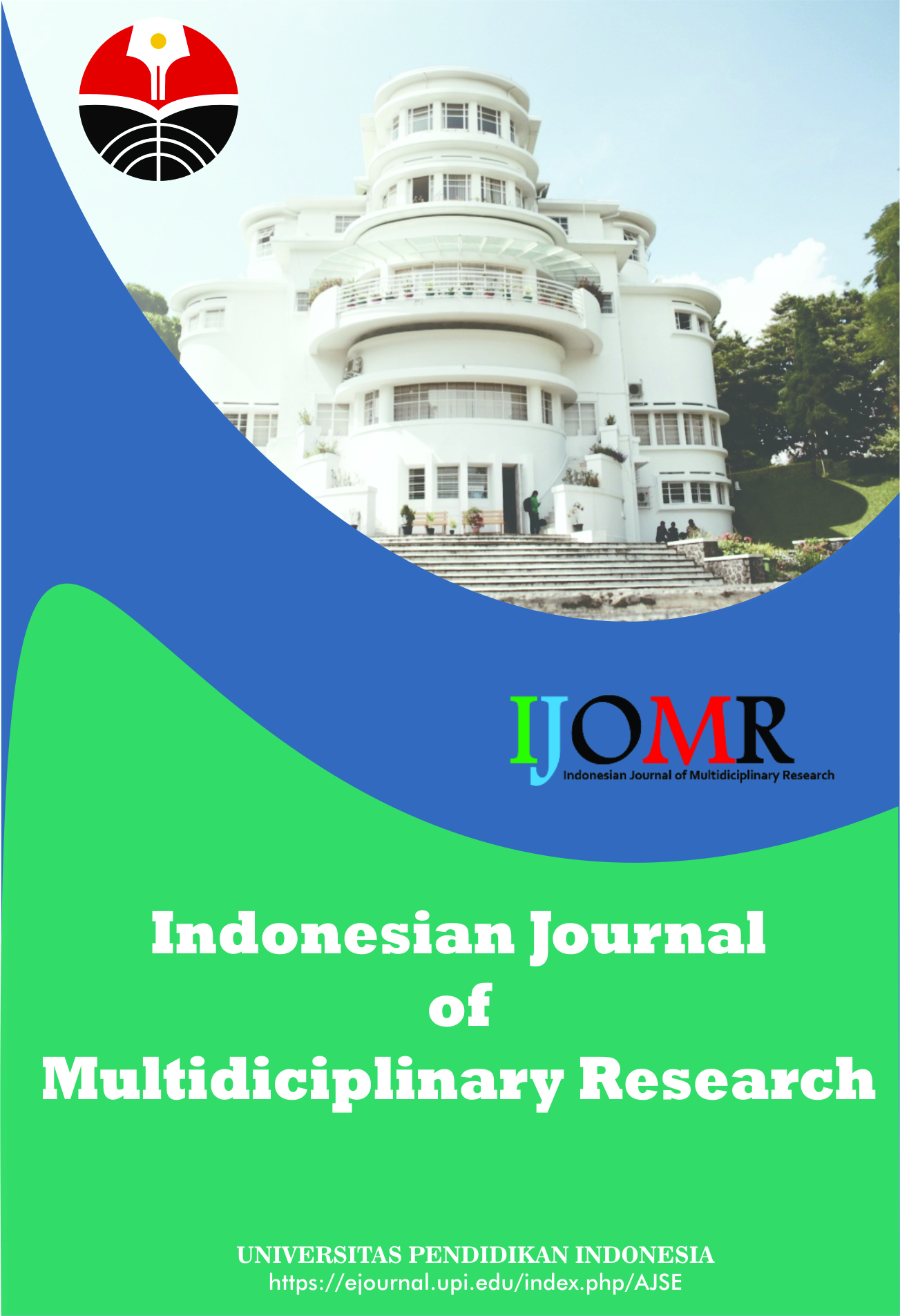Noise Pollution in Libraries: Impacts, Strategies, and Recommendations
Abstract
Keywords
Full Text:
PDFReferences
Alimohammadi, I., Kanrash, F. A., Abolaghasemi, J., Afrazandeh, H., and Rahmani, K. (2018). Effect of chronic noise exposure on aggressive behavior of automotive industry workers. The International Journal of Occupational and Environmental Medicine, 9(4), 170.
AlOmani, A., El-Rayes, K., and Altuwaim, A. (2021). Optimizing the use of acoustic materials in office buildings. Scientific Reports, 11(1), 20652.
American Library Association. (1920). ALA Bulletin, 14(5), 321-322.
Arcangeli, G., Lulli, L. G., Traversini, V., De Sio, S., Cannizzaro, E., Galea, R. P., and Mucci, N. (2022). Neurobehavioral alterations from noise exposure in animals: a systematic review. International Journal of Environmental Research and Public Health, 20(1), 591.
Banerjee, T., and Miller, C. (2002). The effects of building acoustics on classroom environment and student learning. Journal of Educational Psychology, 94(1), 188-195.
Bhang, S. Y., Yoon, J., Sung, J., Yoo, C., Sim, C., Lee, C., ... and Lee, J. (2018). Comparing attention and cognitive function in school children across noise conditions: A quasi-experimental study. Psychiatry Investigation, 15(6), 620.
Borges Filho, O., Ribas, A., Gonçalves, C. G. D. O., Lacerda, A. B. M., Riesemberg, R., and Klagenberg, K. (2017). Perception of noise pollution in a youth and adults school in Curitiba-PR. International Archives of Otorhinolaryngology, 21(04), 313-317.
Braat-Eggen, E., Reinten, J., Hornikx, M., and Kohlrausch, A. (2021). The effect of background noise on a “studying for an exam” task in an open-plan study environment: A laboratory study. Frontiers in Built Environment, 7, 687087.
Chander, H., McCrory, A., Chandler, S. J., Freeny, S., Griffith, A., Burch, R., Strawderman, L., and Knight, A. C. (2023). Noise Interference Impacts Simple and Choice Response Times during a Lower Extremity Cognitive–Motor Task. Clinical and Translational Neuroscience, 7(1), 4.
Choi, J. Y., Hong, J. H., and Jeon, J. Y. (2015). The effects of physical library environment on user satisfaction: A case study of university libraries in Korea. Library Hi Tech News, 32(6), 118-127.
Clark, C., and Paunovic, K. (2018). WHO environmental noise guidelines for the European region: A systematic review on environmental noise and cognition. International Journal of Environmental Research and Public Health, 15(2), 285.
Davis, D. G., Murphy, D. B., and Purcell, T. L. (1996). Physiological and behavioral effects of chronic noise stress. Psychophysiology, 33(1), 30-37.
Dohmen, M., Braat-Eggen, E., Kemperman, A., and Hornikx, M. (2022). The effects of noise on cognitive performance and helplessness in childhood: A review. International Journal of Environmental Research and Public Health, 20(1), 288.
Ellermeier, W., and Hellbrück, J. (2003). Noise and stress: A review. Zeitschrift für Lärmbekämpfung, 50(1), 20-28.
Evans, G. W. (2006). A theory of environmental adaptation. Psychological Bulletin, 132(5), 611-647.
Francis, S., and Thompson, R. G. (2005). Noise pollution and its effects on human health. British Medical Bulletin, 68(1), 165-185.
Gushee, R. V., and Day, D. M. (2004). The effects of classroom noise on children's listening and comprehension abilities. Learning and Environment, 3(2), 187-204.
Halperin, D. (2014). Environmental noise and sleep disturbances: A threat to health?. Sleep Science, 7(4), 209-212.
Hygge, S., and Wyon, D. P. (2007). The Norwegian indoor climate study: Part 1–thermal comfort, perceived air quality, and symptoms. Indoor Air, 17(3), 246-256.
Jafari, M. J., Khosrowabadi, R., Khodakarim, S., and Mohammadian, F. (2019). The effect of noise exposure on cognitive performance and brain activity patterns. Open Access Macedonian Journal of Medical Sciences, 7(17), 2924.
Kalantary, S., Dehghani, A., Yekaninejad, M. S., Omidi, L., and Rahimzadeh, M. (2015). The effects of occupational noise on blood pressure and heart rate of workers in an automotive parts industry. ARYA Atherosclerosis, 11(4), 215.
Khajenasiri, F., Zamanian, A., and Zamanian, Z. (2016). The effect of exposure to high noise levels on the performance and rate of error in manual activities. Electronic Physician, 8(3), 2088.
Kjellberg, A., Wood, G., Whitaker, D., and Edwards, J. (2002). The effects of noise exposure and stress on the performance of a working memory task. British Journal of Psychology, 93(3), 469-491.
Klatte, M., Bergström, K., and Lachmann, T. (2013). Does noise affect learning? A short review on noise effects on cognitive performance in children. Frontiers in Psychology, 4, 55965.
Kunc, H. P., McLaughlin, K. E., and Schmidt, R. (2016). Aquatic noise pollution: implications for individuals, populations, and ecosystems. Proceedings of the Royal Society B: Biological Sciences, 283(1836), 20160839.
Lam, B., Gan, W. S., Shi, D., Nishimura, M., and Elliott, S. (2021). Ten questions concerning active noise control in the built environment. Building and Environment, 200, 107928.
Lercher, P., and Egelkraut-Holtmann, M. (1996. Effects of noise on memory performance. Zeitschrift für Lärmbekämpfung, 49(5), 132-136.
Liang, P., Li, J., Li, Z., Wei, J., Li, J., Zhang, S., Xu, S., Liu, Z., and Wang, J. (2024). Effect of low-frequency noise exposure on cognitive function: a systematic review and meta-analysis. BMC Public Health, 24(1), 125.
Liao, H., Ren, R., and Li, L. (2023). Existing building renovation: a review of barriers to economic and environmental benefits. International Journal of Environmental Research and Public Health, 20(5), 4058.
Monazzam, M. R., Shamsipour, M., Zaredar, N., and Bayat, R. (2022). Evaluation of the relationship between psychological distress and sleep problems with annoyance caused by exposure to environmental noise in the adult population of Tehran Metropolitan City, Iran. Journal of Environmental Health Science and Engineering, 20(1), 1-10.
Monteiro, R., Tomé, D., Neves, P., Silva, D., and Rodrigues, M. A. (2018). The interactive effect of occupational noise on attention and short-term memory: A pilot study. Noise and Health, 20(96), 190-198.
Moroe, N., and Mabaso, P. (2022). Quantifying traffic noise pollution levels: a cross-sectional survey in South Africa. Scientific Reports, 12(1), 3454.
Nazneen, S., Raza, A., and Khan, S. (2020). Assessment of noise pollution and associated subjective health complaints and psychological symptoms: analysis through structure equation model. Environmental Science and Pollution Research, 27, 21570-21580.
Olayinka, O. S. (2013). Effective Noise Control Measures and Sustainable Development in Nigeria. World Journal of Environmental Engineering, 1(1), 5-15.
Omogbiya, A. I., Moke, E. G., Ojieh, A. E., Enaohwo, M. T., Umukoro, E. K., Anachuna, K. K., and Omilo, C. U. (2020). Evaluation of perception, attitude, and impact of club-house noise pollution on mental health of individuals living within proximity of club-houses in Abraka, Delta State, Nigeria. Journal of Applied Sciences and Environmental Management, 24(6), 1009-1013.
Onchang, R., and Hawker, D. W. (2018). Community noise exposure and annoyance, activity interference, and academic achievement among university students. Noise and Health, 20(94), 69-76.
Peng, L., Wei, W., Fan, W., Jin, S., and Liu, Y. (2022). Student experience and satisfaction in academic libraries: A comparative study among three universities in Wuhan. Buildings, 12(5), 682.
Rugel, R. P., and Oke, T. E. (2003). Classroom acoustics and its relationship to student engagement. Education and Urban Society, 35(3), 309-332.
Shondell, N. E. (2005). Library noise: A literature review. Public Libraries, 44(2), 22-29.
Smith, S. W., Ortmann, A. J., and Clark, W. W. (2018). Noise in the neonatal intensive care unit: a new approach to examining acoustic events. Noise and Health, 20(95), 121-130.
Sundberg, J., and Lindström, B. (2006). Noise exposure and stress hormones in office workers. Occupational and Environmental Medicine, 63(12), 920-927.
Thompson, R., Smith, R. B., Karim, Y. B., Shen, C., Drummond, K., Teng, C., and Toledano, M. B. (2022). Noise pollution and human cognition: An updated systematic review and meta-analysis of recent evidence. Environment international, 158, 106905.
Tiwari, S. K., Kumaraswamidhas, L. A., and Garg, N. (2023). Assessment of noise pollution and associated subjective health complaints in Jharia Coalfield, India: A structural equation model analysis. Noise Mapping, 10(1), 20220172.
Woolner, P., and Hall, E. (2010). Noise in schools: a holistic approach to the issue. International Journal of Environmental Research and Public Health, 7(8), 3255-3269.
Yang, D., Liu, X., Ren, Z., and Li, M. (2022). Relation between noise pollution and life satisfaction based on the 2019 Chinese Social Survey. International Journal of Environmental Research and Public Health, 19(12), 7015.
Yang, F., Bao, Z. Y., and Zhu, Z. J. (2011). An assessment of psychological noise reduction by landscape plants. International journal of environmental research and public health, 8(4), 1032-1048.
Yildirim, S., and Cinar, F. N. (2016). The effect of noise pollution on student academic performance in libraries. Journal of Educational and Social Science Research, 6(1), 127-139.
DOI: https://doi.org/10.17509/ijomr.v4i1.68751
Refbacks
- There are currently no refbacks.
Copyright (c) 2024 Kantor Jurnal dan Publikasi, Universitas Pendidikan Indonesia (UPI)

This work is licensed under a Creative Commons Attribution-ShareAlike 4.0 International License.
Indonesian Journal of Multidiciplinary Research (IJOMR) is published by Universitas Pendidikan Indonesia (UPI)















